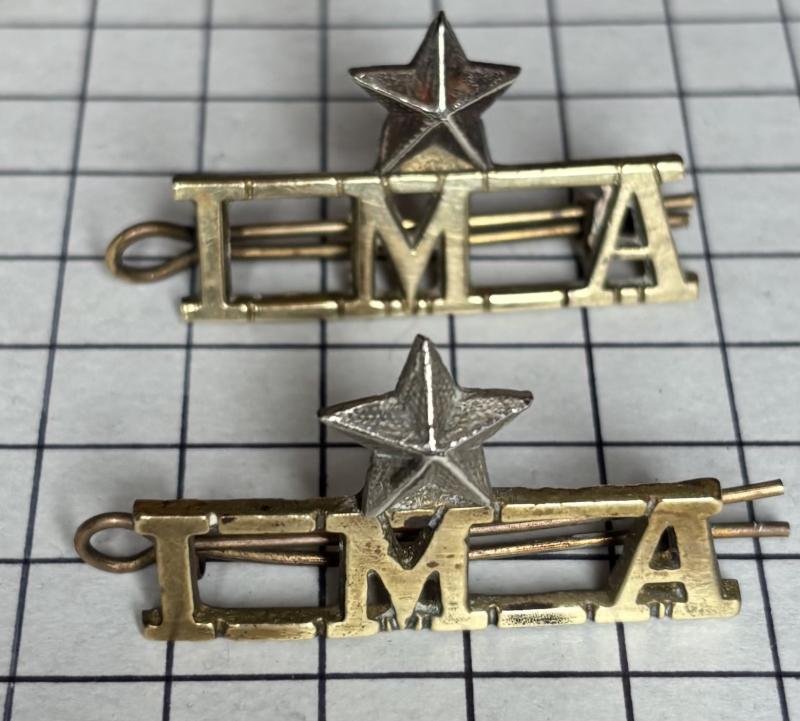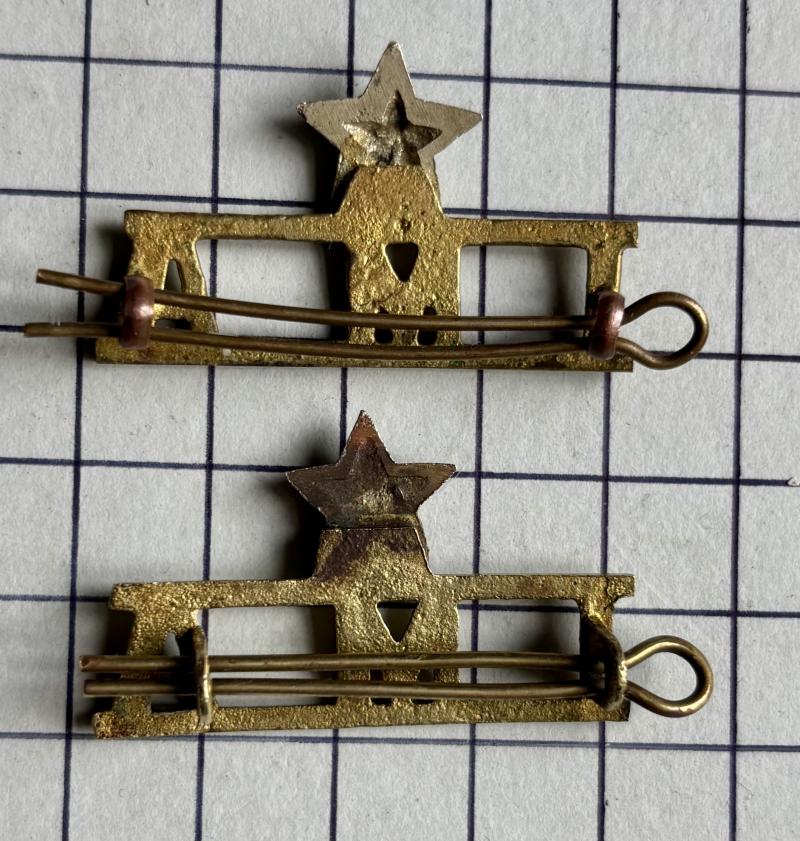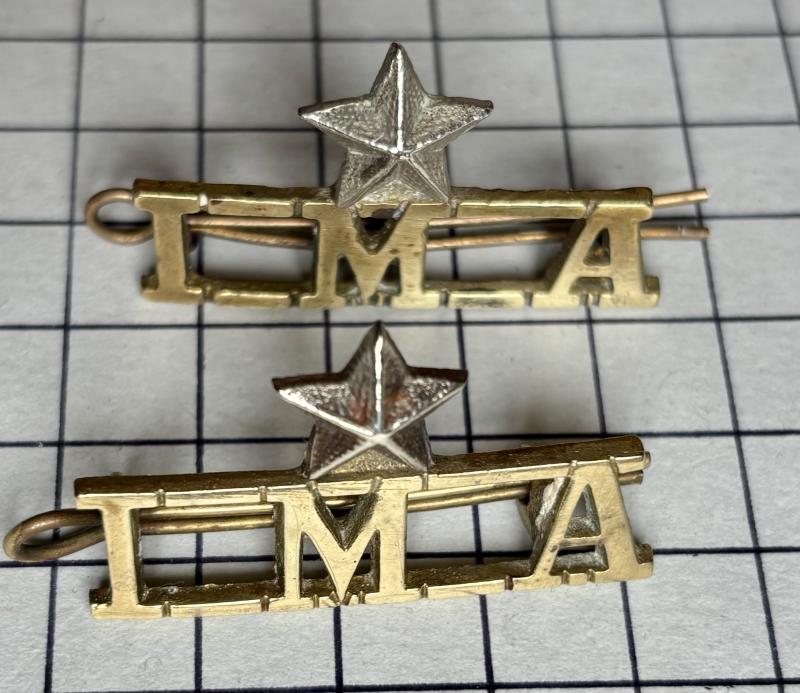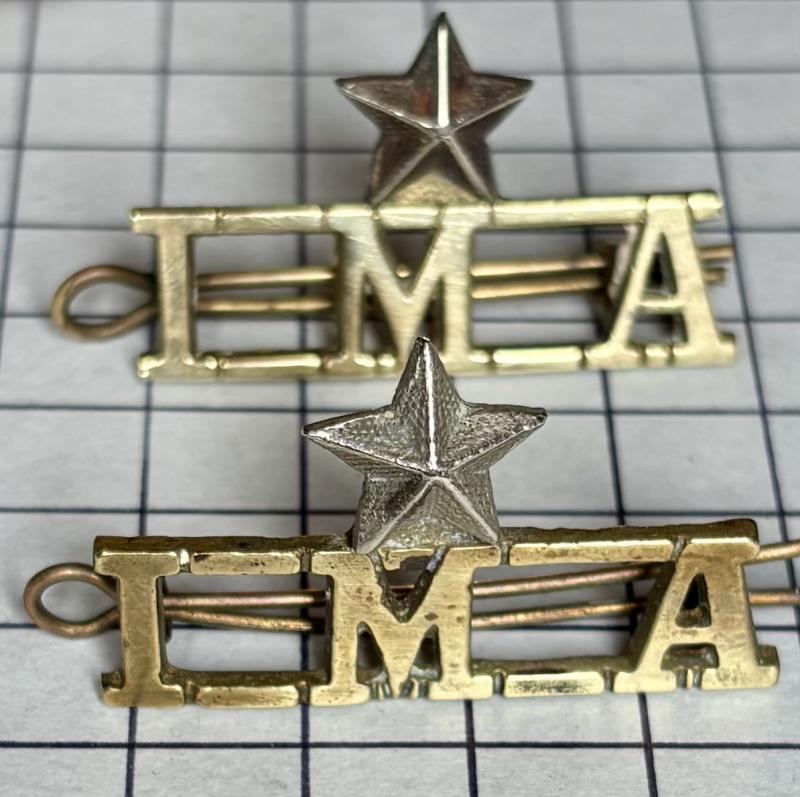cWW2 Indian Military Academy (IMA) Pair of Cast Brass Shoulder Title Badges
c1932 - 49 'I.M.A.' Shoulder titles, pr of cast brass titles with white metal stars on top. Loops. GC.
The Government of India transferred the former property of the Railway Staff College of the Indian Railways, with its 206-acre campus and associated infrastructure, to the Indian Military Academy. Brigadier L.P. Collins was appointed the first Commandant and the first batch of 40 gentleman cadets (GC), as IMA trainees are known, began their training on 1 October 1932. The institute was inaugurated on 10 December 1932 by General Sir Philip Chetwode, 7th Bt Chetwode was promoted to being a Field Marshal the following year, in February 1933.
In 1934, before the first batch had passed out, Viceroy Lord Willingdon presented the first colours to the academy on behalf of King George V. The first batch of cadets to graduate the academy, graduating in December 1934, now known as the Pioneers, included Field Marshal Sam Manekshaw, General Muhammad Musa and General Smith Dun, who became the Army Chiefs of India, Pakistan, and Burma, respectively. General Dun graduated at the top of his class at IMA and also commanded the passing out parade for the first course. The second, third, fourth and fifth batches were called, respectively, Immortals, Invincible, Stalwarts and Bahadurs.
"The cadets came to the Academy from all parts of India as it was prior to the independence and partition of India in 1947. There were Punjabi Hindus and Mussalmans, Sikhs, Bengalis, Marathas, Madrasis, Coorgies. But we worked and lived as one, namely Indians first. I have emphasised it because even today as far as the armed forces are concerned the concept has not changed and is implemented in practice".
(Maj Gen. A. S. Naravane (Retd) joined IMA on 29 January 1936)
(Naravane 2004, p. 11).
Through the first 16 regular courses that passed out of the academy, until May 1941, 524 officers were commissioned. But the outbreak of the Second World War resulted in an unprecedented increase in the number of entrants, a temporary reduction in the training period to six months and an expansion of the campus. A total of 3,887 officers were commissioned between August 1941 and January 1946, including 710 British officers for the British Army. The academy reverted to its original two and a half year course of training at the end of the war. During the final years before Independence, the academy navigated the role of training officers for both colonial and postcolonial armies.
Code: 1590
24.00 GBP




